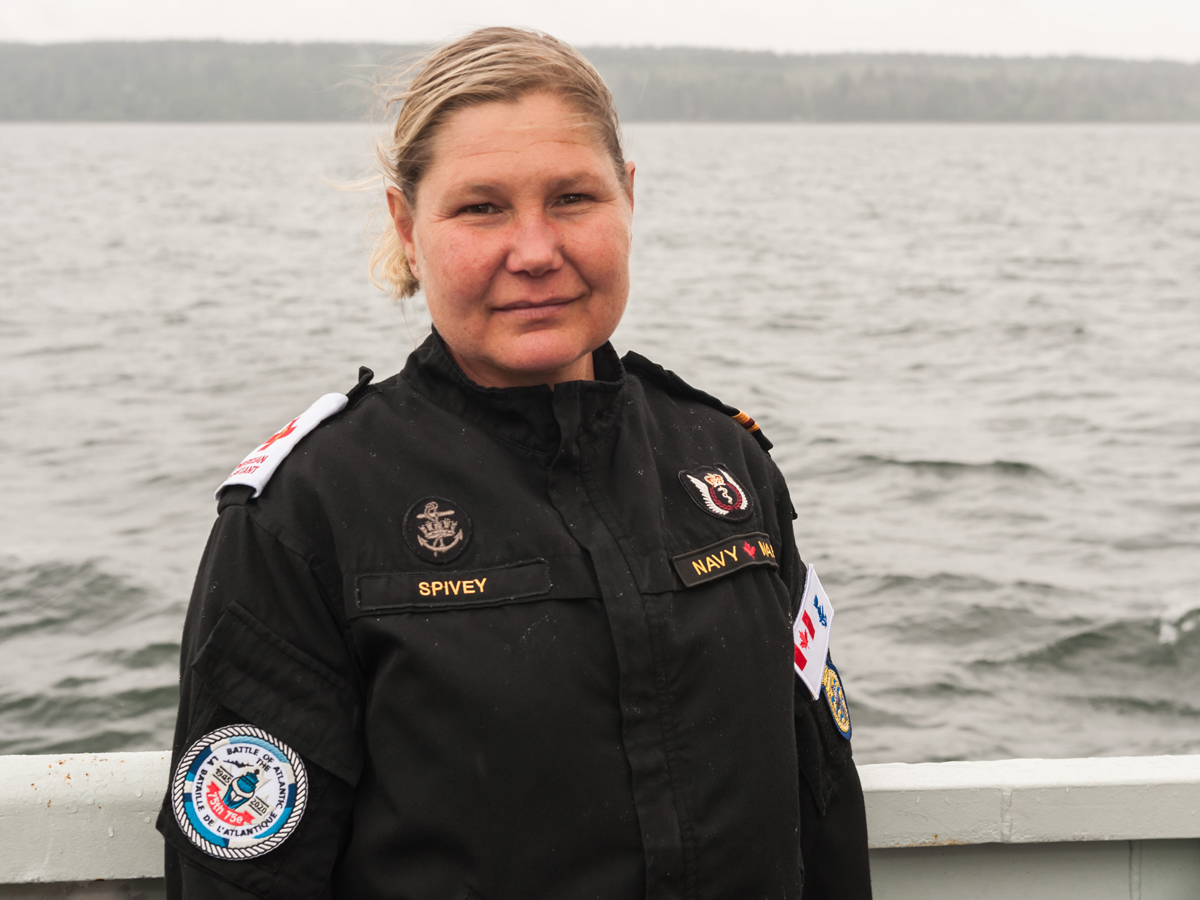The Unsinkable Doc
By Lookout on May 25, 2020 with Comments 1
Lieutenant Chelsea Dubeau, HMCS Nanaimo Public Affairs Officer ~
“Is the Doc in here?” asks a member of the ship’s company as they poke their head into the wardroom.
The Doc is in.
Sub-Lieutenant (SLt) Nicole Spivey, HMCS Nanaimo’s Physician Assistant, or Doc as she is known, waves the person in. Nanaimo’s Doc is a former Medical Technician of 13 years who commissioned as a Physician Assistant in January 2020 after completing her training.
The patient takes a seat while SLt Spivey does a quick examination of what ails: a bump to the head, but it’s not too bad. A quick clean of the wound, a couple Band-Aids, and a few encouraging words and the patient is good to go. Today, it’s a minor head wound; tomorrow, who can say.
The medical needs of a ship’s company can be vast, varied, and as complex as the human beings on board. The relationship that forms between individual members and the specialists on board who nurture their welfare is unlike any other, especially with the person who provides medical care.
Physician Assistants see the usual bumps and scrapes, coughs and colds, headaches, bellyaches, and more; those normal ailments that come from working in tight, close quarters, with disrupted sleep schedules and the unique trials and tribulations that come with the territory in which the crew operates: a ship at sea.
But they are prepared to treat, at least initially, more serious medical events that might occur, everything from urinary tract infections to cardiac events.
Kingston-Class ships don’t normally sail with a Physician Assistant on board unless on deployment or other demanding sails where they are required. The rest of the time it’s the Casualty Clearing Team, led by the Chief Cook, that responds to the medical needs of the crew.
SLt Spivey has been attach-posted to Nanaimo since the ship’s mission readiness training for Operation Caribbe, and has continued through the first rotation of Operation Laser, where one of her priorities has been to provide ongoing, critical training to the Casualty Clearing Team team to ensure they are able to respond to a medical emergency in the absence of a Physician Assistant.
“When I was in Kuwait as a Med Tech one of our doctors was an ER doctor, Major Trevor Jain, a reservist. He taught us the best way to learn was by hands-on training,” says SLt Spivey. “So every week we did some kind of training that way, whether it was wound packing in roast beef, interosseous IVs in sheep legs, or needle decompression with pig ribs plastered to the side of a sharp’s container with lungs made of condoms.”
SLt Spivey trains her Casualty Clearing Team using the same methods, with the Chief Cook, PO2 Dave Manryk providing the “patient” material on one occasion: a cooked ham bone into which SLt Spivey put an interosseous IV.
Not that the Casualty Clearing Team would ever perform such a procedure, but it’s informative, engaging, and helps give the them a unique depth of knowledge that maybe one day they’ll be called to draw upon in some way.
“Doc’s really been a keystone in the ship’s team,” says Lieutenant Commander Dave Schmidt, Executive Officer of HMCS Nanaimo. “Her primary duty obviously is medical, but on top of that she’s well integrated into the ship. She’s always running around doing special projects. She really does take care of the crew.”
For SLt Spivey, caring for the crew starts with helping with whatever she can, whenever she can.
She recently led a non-surgical mask-making effort in order to provide members of the crew with Personnel Protective Equipment during their rest period in between Op Laser rotations. During Op Caribbe, she worked alongside the galley staff to get to know every person on board.
“I think it’s really important to get to know everybody, and not on a patient level, first,” says SLt Spivey. “You have to build that trust not as a clinician-patient relationship, but as a person-to-person relationship. Then the other trust just happens naturally.”
She is endlessly pragmatic.
“I just do my job to the best of my ability. Whether I’m a clinician sitting behind a desk coaching someone on lifestyle changes for Type 2 Diabetes, or I’m sitting in a desert hoping that nothing bad is going to happen, there’s no difference in medicine there. It’s the same thing – you’re there to take care of the patient.”
She has been on seven deployments and racked up 530 days at sea which has meant being away from her daughter Caitlin.
“We build Lego every couple days over the phone,” says SLt Spivey. “It’s something to do together even though we’re not together.”
Caitlin has inherited her mother’s considerate nature, putting care packages together for medical staff deployed on other Op Laser-tasked ships as well as a few members in Nanaimo.
“Maybe it’s because she’s an only child she doesn’t want people to feel left out,” says SLt Spivey. Many members of the crew are reservists who are far from home, and therefore don’t have family nearby to do that for them.
Caitlin wants to be a Pharmacist, perhaps even a pharmacist in the military. Imitation is often said to be the sincerest form of flattery. In SLt Spivey’s case, it might just be a sign of how proud Caitlin is of her mother.
SLt Spivey looks wistful as she considers that.
“I hope she’s proud,” she says.
––––
Filed Under: Top Stories
About the Author:







Good job.